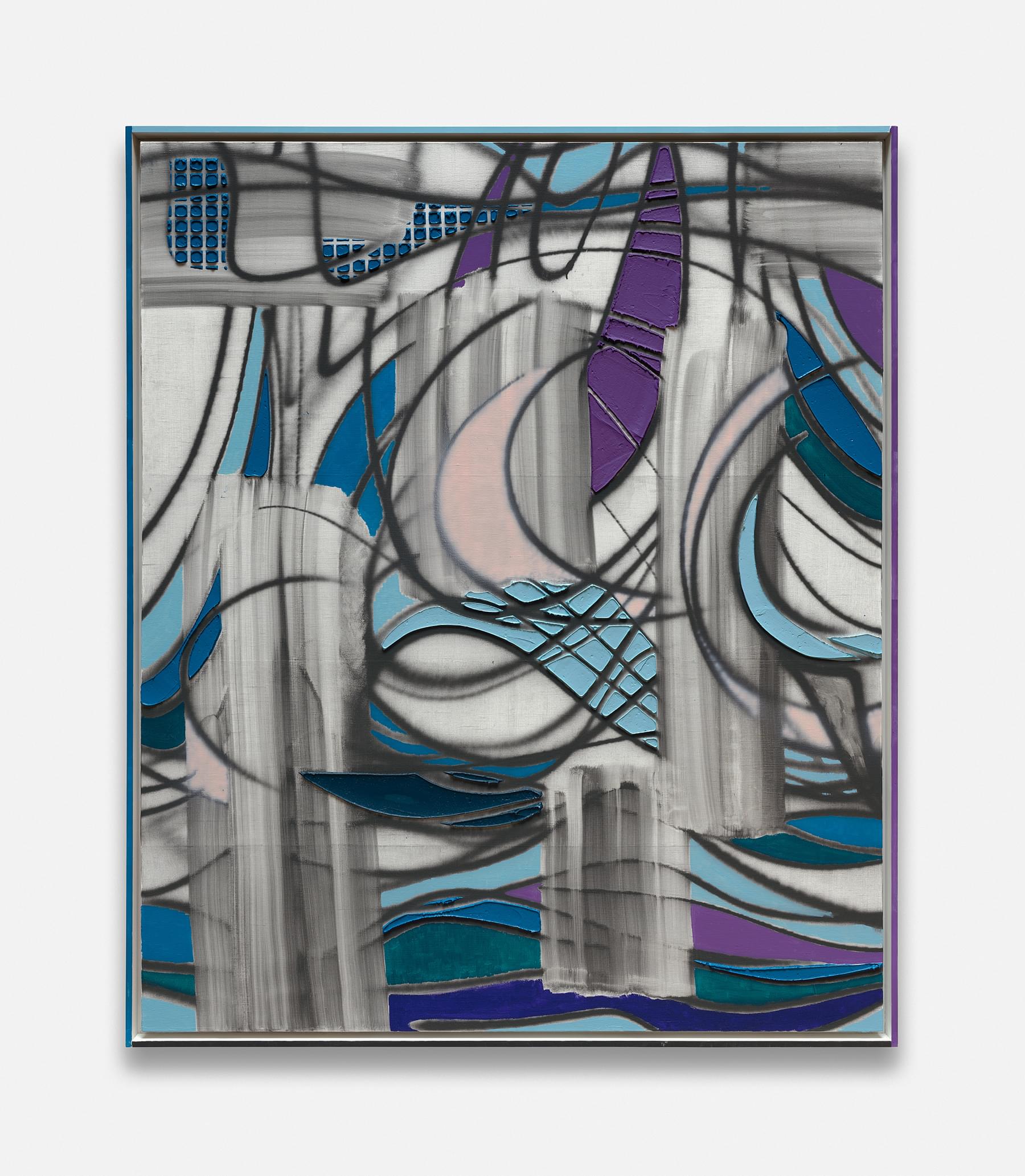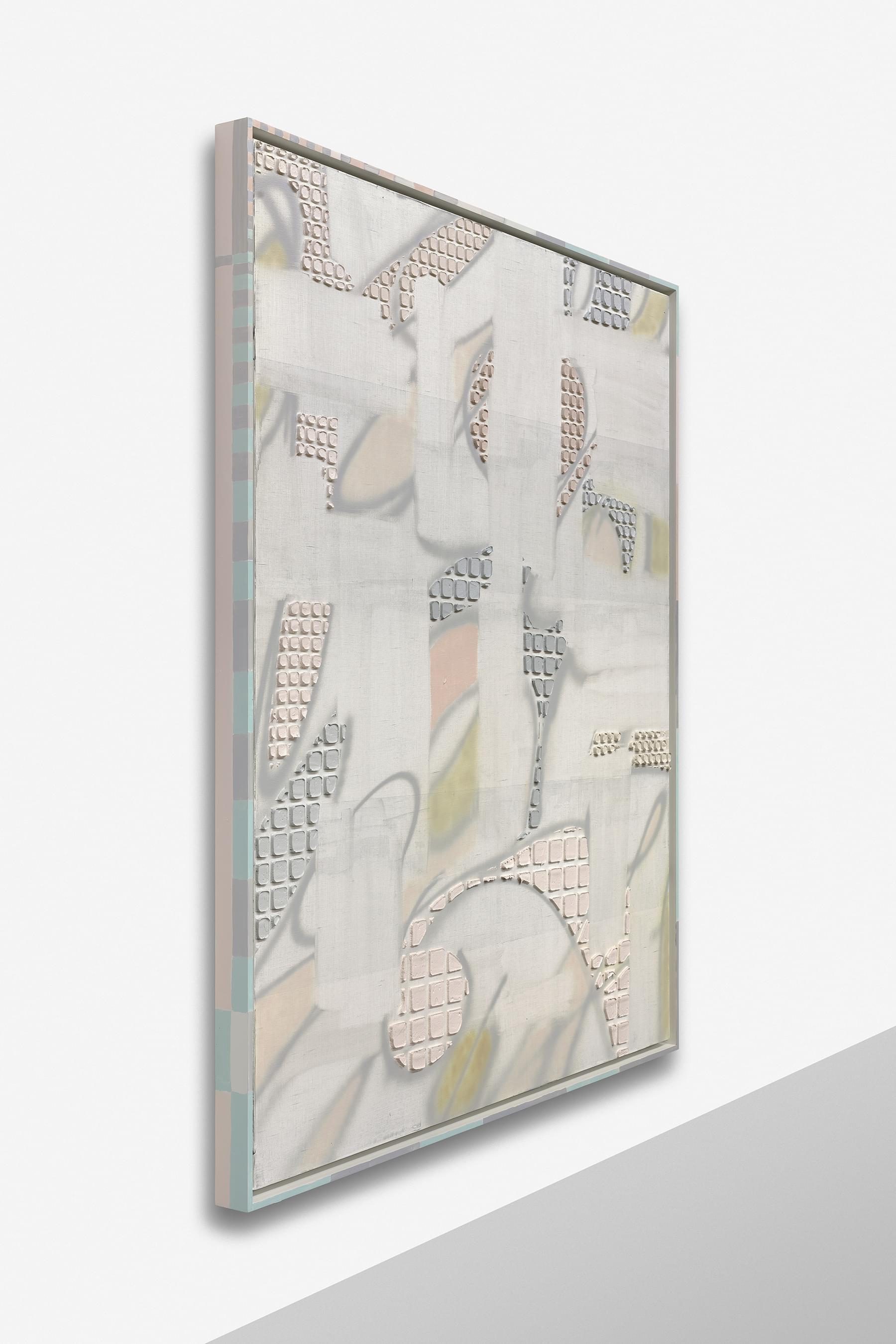
Keltie Ferris[[[GENAU]]]
We are very pleased to present the second solo exhibition of works by New York-based artist Keltie Ferris (b.1977) at the gallery. The exhibition brings together a new set of paintings and drawings by the artist, and will be on view from September 28 until November 10, 2018.
Keltie Ferris’s paintings need no theme, context, or network in order to develop their force and meaning. They reveal their influences and are independent, reconceived and freely conceived. Functioning according to a logic of their own, they capture on canvas the plethora of information and visuals, the overload, the pressure, and “all that jazz” surrounding us, asserting it all with the subtle use of the familiar. This is painting for painting’s sake; it develops its depth and objective “critical potential” emphatically and without naiveté. Self-confident and sans detachment or facile coolness, they offer potential access to the current state of our times and the human condition, affirming in intriguing ways the significance that the artist’s perspective and attitude can take.
Ferris is known for her expressive geometric color fields that synthesize an array of schools of painting, ranging from early modernist schools, to Abstract Expressionism, to street art and graffiti on her large signature canvases and in her recent “body prints” on paper. With a specific oil-based, air-brush technique and marks from other tools such as palette-knives, the artist constructs her abstract language and layers of distinct, rich textures on her paintings, simultaneously inscribing and removing her own presence on canvas.
Multilayered, and informed by spheres outside the classical realm of painting, referencing sculpture, media, and even performance, Ferris’s works can be understood as deliberately hybrid in nature. They go beyond abstraction, bearing an atmosphere in which physical presence merges with the qualities of the painting materials she employs. These notions are now strongly represented in her new body of work. On display is an energetic and confident move away from the indistinct hues of her earlier work and toward a new sense of plasticity and expressive gestures. While maintaining her unmistakable, unruly patterns and electric chromatics, Ferris showcases a newly found sophistication in her impasto color and assertive brushwork, furthering her investigation into the essence of painting.
The paintings are still jarringly immediate: broad, foregrounded strokes in hues of gray are layered onto thick, saturated grids of oil paint, while strong black lines, reminiscent of Christopher Wool’s or Albert Oehlen’s erratic gestures, both orbit and traverse the lush color-fields. A well-balanced dialogue of contrasts is at play: great painterly virtuosity is challenged by the spontaneity of “erasures.” Looking as if they have been wiped, these sections of the canvas seem to obliterate previous information, yet at the same time they provide a new sense of order and visual guidance. Softly fading colors emit a warm atmosphere that is confronted by strict grids of marble dust and oil paint, thickly applied to the canvas with custom-made stencils. As in her earlier works, the spectrum of colors and her choice of specific color schemes play a key role. Wood tones, earthy greens, and watery blues seem to be derived from an unfiltered observation of nature, and when set against bright reds or violets, they convey the nervousness and rigor of the city.
The turn toward sculptural elements and the provision of new order are even more pronounced and contextualized by the artist’s framing of the paintings. For the first time, Ferris is using hand-made, custom-painted wooden frames, visually recalling early twentieth-century American folk art or Modernism. At the same time, they contain the potential of the works within their canvases, while also unleashing their potential to go beyond them.
The “protective frame” underscores the sculptural/object-like character of the work, while at the same time, with its unexpected appearance in these large formats, it can serve as a potentially critical citation of, or reference to, escapism and the tendencies to retreat that dominate much of our current social discourse. Again, Ferris is able to introduce a layer that demonstrates she is a painter who, alongside her virtuosity, possesses an absolute eye for the peculiarities and psychological constraints of our time.
The tension between the furtive flickers of contemporaneity apparent in these paintings and their almost classical transcendental and physical aspects evokes something that seems to have been nearly lost today: the desire to take one’s time and to re-learn how to recognize one’s own sensibilities. In this way Keltie Ferris provides an exciting and emphatic proposal as to how painting can function these days, while also remaining relevant.





















